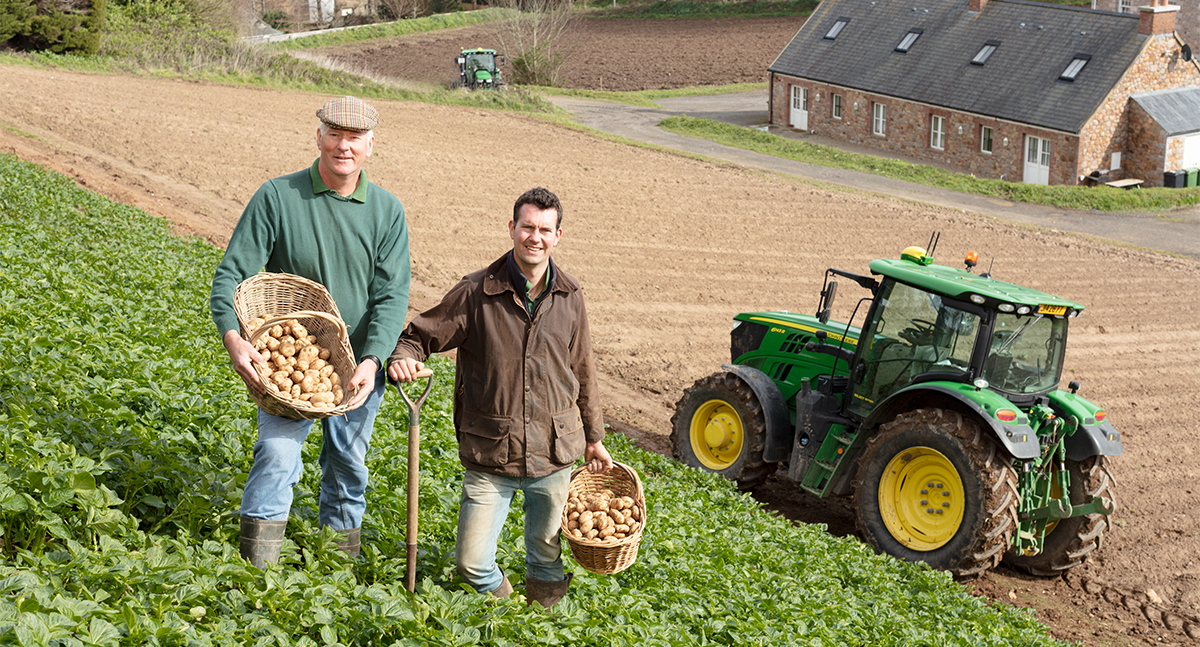As global populations grow and environmental concerns intensify, sustainable farming practices have become increasingly crucial. Sustainable farming not only aims to enhance agricultural productivity but also seeks to minimize negative environmental impacts, preserve natural resources, and promote biodiversity. This article explores the principles of sustainable farming and highlights key practices that enable farmers to grow crops while protecting the planet.
### **1. Understanding Sustainable Farming**
**Defining Sustainability in Agriculture**
Sustainable farming integrates methods that maintain ecological balance and support long-term agricultural productivity. The goal is to create systems that meet the needs of current generations without compromising the ability of future generations to meet their own needs. Sustainable farming practices focus on three main pillars:
– **Environmental Health:** Reducing pollution, conserving resources, and maintaining ecosystems.
– **Economic Viability:** Ensuring that farming practices are financially feasible and beneficial for farmers.
– **Social Equity:** Supporting the well-being of farming communities and ensuring fair labor practices.
### **2. Soil Health and Conservation**
**Building Healthy Soil**
Soil health is fundamental to sustainable farming. Healthy soil supports plant growth, retains water, and sequesters carbon, making it a critical component of sustainable agriculture.
– **Organic Matter and Composting:** Adding organic matter, such as compost and manure, improves soil structure, fertility, and water-holding capacity. Composting also helps recycle nutrients and reduce waste.
– **Cover Cropping:** Planting cover crops, such as legumes or grasses, during off-seasons helps prevent soil erosion, improve soil structure, and enhance nutrient content. Cover crops also reduce the need for synthetic fertilizers.
**Conservation Tillage**
Conservation tillage techniques minimize soil disturbance and help preserve soil integrity.
– **No-Till Farming:** No-till farming involves planting crops without disturbing the soil. This practice helps reduce erosion, improve soil moisture retention, and enhance soil health.
– **Reduced Tillage:** Reduced tillage involves minimal soil disturbance compared to conventional tillage. It helps maintain soil structure and supports beneficial microorganisms.
### **3. Efficient Water Use**
**Optimizing Irrigation Practices**
Water is a critical resource for agriculture, and efficient use is essential for sustainable farming.
– **Drip Irrigation:** Drip irrigation delivers water directly to plant roots through a network of tubes and emitters. This method minimizes water wastage and reduces evaporation and runoff.
– **Rainwater Harvesting:** Collecting and storing rainwater for irrigation helps reduce reliance on groundwater and supports water conservation efforts.
**Soil Moisture Monitoring**
Soil moisture sensors and weather data help farmers manage irrigation more effectively.
– **Soil Moisture Sensors:** These sensors measure soil water content and provide real-time data to optimize irrigation schedules. By applying water only when needed, farmers can reduce water usage and improve crop health.
– **Weather Forecasting:** Integrating weather data with irrigation systems allows farmers to adjust watering schedules based on rainfall predictions and climatic conditions.
### **4. Biodiversity and Ecosystem Management**
**Promoting Biodiversity**
Biodiversity supports ecosystem health and resilience, providing benefits such as pest control and pollination.
– **Crop Rotation:** Rotating crops helps prevent soil depletion, reduce pest and disease buildup, and improve soil fertility. Diverse crop rotations also enhance soil biodiversity.
– **Agroforestry:** Integrating trees and shrubs into crop systems provides multiple benefits, including habitat for wildlife, improved soil structure, and enhanced nutrient cycling.
**Natural Pest and Disease Management**
Integrated Pest Management (IPM) employs a combination of techniques to manage pests and diseases sustainably.
– **Biological Control:** Utilizing natural predators, such as ladybugs or parasitic wasps, helps control pest populations without relying on synthetic pesticides.
– **Cultural Practices:** Techniques such as crop rotation, intercropping, and selecting pest-resistant crop varieties reduce pest and disease pressures.
### **5. Energy Efficiency and Waste Reduction**
**Reducing Energy Consumption**
Energy efficiency is a key component of sustainable farming. Reducing energy use helps lower greenhouse gas emissions and operational costs.
– **Renewable Energy:** Solar panels, wind turbines, and biogas systems provide renewable energy sources for farming operations. These technologies reduce reliance on fossil fuels and decrease carbon footprints.
– **Energy-Efficient Equipment:** Investing in energy-efficient machinery and equipment helps reduce energy consumption and operational costs.
**Minimizing Waste**
Waste reduction strategies support sustainability by recycling resources and reducing environmental impacts.
– **Nutrient Recycling:** Reusing nutrient-rich organic materials, such as compost and manure, reduces the need for synthetic fertilizers and minimizes waste.
– **Food Waste Management:** Implementing strategies to minimize food waste, such as proper storage and processing techniques, helps reduce environmental impacts and improve food security.
### **6. Sustainable Farming in Practice: Case Studies**
**Success Stories**
Several farms around the world have successfully implemented sustainable practices and demonstrated their benefits.
– **Regenerative Agriculture:** Farms practicing regenerative agriculture focus on restoring soil health, increasing biodiversity, and sequestering carbon. These farms use techniques such as cover cropping, reduced tillage, and holistic grazing to improve ecosystem health.
– **Urban Agriculture:** Urban farms and community gardens use sustainable practices to grow food in city environments. These projects often incorporate vertical farming, rainwater harvesting, and organic gardening methods to enhance food security and promote local sustainability.
### **Conclusion**
Sustainable farming practices offer a pathway to grow crops while protecting the planet. By focusing on soil health, efficient water use, biodiversity, and energy efficiency, farmers can enhance productivity and contribute to environmental stewardship. The integration of innovative techniques and technologies, combined with traditional practices, provides a holistic approach to agriculture that supports both current and future generations. As the world faces increasing challenges related to climate change and resource management, sustainable farming stands as a crucial solution for a resilient and thriving agricultural system.

